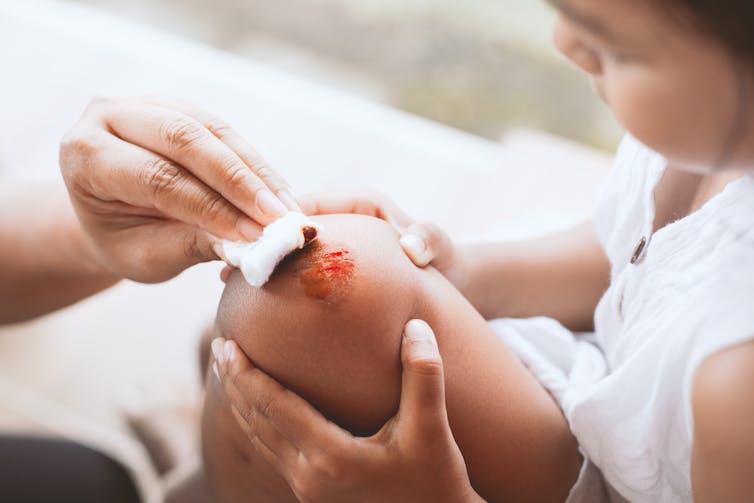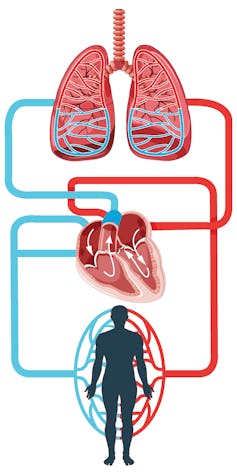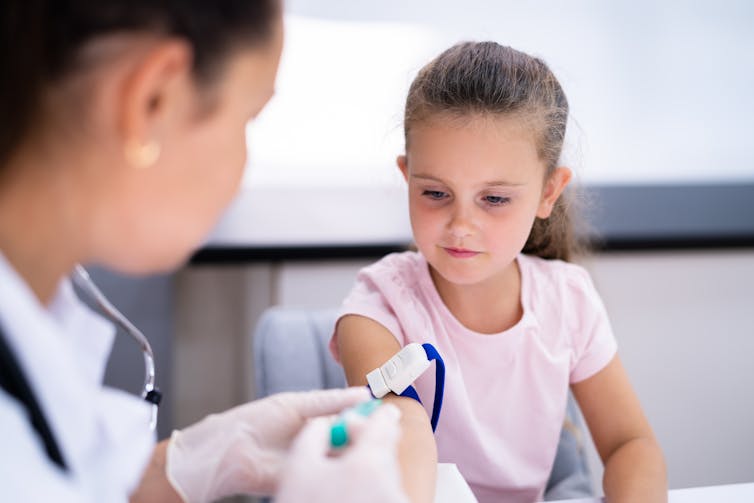Source: The Conversation (Au and NZ) – By Theresa Larkin, Associate professor of Medical Sciences, University of Wollongong
Why is blood red?
– Asher, 6 years 11 months, New South Wales
What a great question about something in our body, Asher.
Blood is inside our body, but we see it on the outside when we bleed, like when we get a cut or a nose bleed.
Blood is red because of something called haemoglobin. Haemoglobin is red and this makes our blood red.
But what is haemoglobin for? Well, we need haemoglobin to carry oxygen in our blood.
This might sound a bit complicated, so let’s look more closely at why we need oxygen, and why we need haemoglobin to carry oxygen in our blood.
Everyone needs oxygen to stay alive
We need oxygen for our body to work.
Our body is made up of millions and millions of tiny cells. All the cells in our body need oxygen from the air we breathe and nutrients from the food we eat.
Cells use oxygen and nutrients to make energy so they can do their job. For example, cells in our muscles need energy to move us, and our brain cells need energy so we can learn.

A3pfamily/Shutterstock
Every time you take a breath in, you breathe oxygen into your lungs. Our heart pumps blood to the lungs to pick up this oxygen.
The heart then pumps the blood with this oxygen to all our body’s cells.
After the blood drops off oxygen for the cells to use, it travels back to the heart and lungs to pick up more oxygen again.
Our cells need oxygen all the time because they are always working.
So where does haemoglobin come in?

GraphicsRF.com/Shutterstock
Oxygen travels in blood to our cells in tubes called blood vessels. But oxygen doesn’t dissolve very well in blood.
If we just had oxygen on its own in our blood, we could get air bubbles. These bubbles would stick to the sides of the blood vessels. This means the oxygen could get stuck and not travel to our cells.
Luckily, haemoglobin carries oxygen in our blood so it doesn’t form air bubbles and get stuck.
We can think of this like trying to move a stone down a river. A stone can’t float down a river because it will sink to the bottom. But if we put the stone in a container that floats, the container can float down the river and carry the stone with it.
Haemoglobin is like a red coloured container for oxygen. It’s our oxygen carrier.
So, because we have red haemoglobin in our blood to carry oxygen, our blood is red.
Blood can be bright red or dark red
When haemoglobin carries more oxygen, it is a brighter shade of red.
This means blood travelling from the heart and lungs to the cells with lots of oxygen is bright red.
After haemoglobin drops off its oxygen to the cells, it is a dull, dark red. This means blood travelling back to the heart and lungs with less oxygen is darker red.

Andrey_Popov/Shutterstock
We can see some of our veins (the blood vessels that carry blood back to the heart) just under our skin. For example, on the back of our hands.
The blood in these veins can appear a green-blue colour. That’s because we are looking at this blood through our skin. This changes what colour we see.
But we know when we bleed, our blood is not blue or green – it’s definitely red.
Not all animals have red blood
An octopus can have blue blood and some lizards even have green blood.
This blue and green blood is also because of the colour of their oxygen carrier. These animals don’t have red haemoglobin like we do. They have a blue or green oxygen carrier. This makes their blood blue or green.
If you could choose to have blood of any colour, what colour would you choose?
Hello, curious kids! Do you have a question you’d like an expert to answer? Ask an adult to send your question to curiouskids@theconversation.edu.au
![]()
Theresa Larkin does not work for, consult, own shares in or receive funding from any company or organisation that would benefit from this article, and has disclosed no relevant affiliations beyond their academic appointment.
– ref. Curious Kids: why is blood red? – https://theconversation.com/curious-kids-why-is-blood-red-229121









